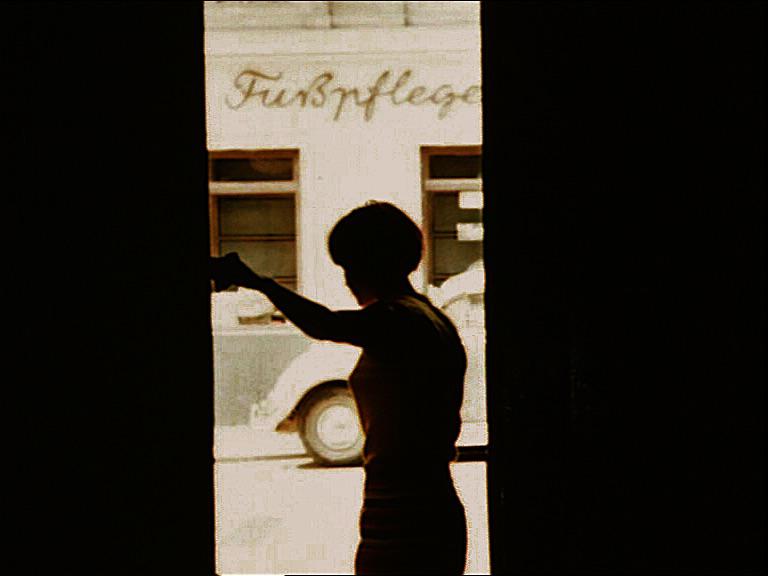Hernals
In front of the camera: Valie Export, Peter Weibel. In Hernals documentary and pseudo-documentary procedures were filmed simultaneously by two cameras from different viewpoints. The material was then divided into phases of movement. In the montage each phase was doubled. The techniques used in this process vary. Also the sound was doubled, again using different techniques. Two realities, differently perceived according to the conditions of this film, were edited into one synthetic reality, where everything is repeated. This doubling up destroys the postulate: identity of copy and image. Loss of identity, loss of reality (e.g. schizophrenia). One has only to imagine a theater piece, where the actors recite each sentence twice, make each gesture twice, play each scene twice - and one conceives perhaps the monstrosity of our reality, which does not allow for duplications. Time is not stopped, but streched - time as fissure between copy and image, time, which creates space. (Peter Weibel)
Thomas Korschil zu Hernals von Hans Scheugl
Der lebendige Realismus dieser Montage (pseudo)dokumentarischer Alltagsszenen wird nicht durch eine direkte Manipulation des fotografischen Abbilds in Frage gestellt. Zum originär filmischen Ereignis wird Hernals durch einen drastischen Eingriff in die zeitliche Ordnung der abgebildeten Vorgänge: Die einzelnen Szenen werden, in Fragmente zerteilt, jeweils zweimal gezeigt, nicht als idente Wiederholungen, sondern in zwei verschiedenen, gleichzeitig aufgenommenen Kameraperspektiven. Die resultierende Parallelmontage sprengt das enge Korsett des konventionellen Kinos räumlich, indem der eine, privilegierende Blickpunkt aufgegeben wird und zeitlich, indem die illusionistische (Spielfilm-)Kontinuität ignoriert wird. Bewegungen und Sprachfetzen werden wiederholt, der Lauf der Zeit auf befremdende Weise unterbrochen und zerdehnt. (1995)
Stefan Grissemann on Hernals by Hans Scheugl
Perhaps as a reaction against his own one-take car travel, Wien 17, Schuhmanngasse, Scheugl here breaks up real time, doubles it for the cinema, turns trivial reality into an alien and completely un-trivial ballet of random (and randomly filmed) movements, into a musical composition of repeated, rhythmic, interlinked scraps of dialogue, and the roaring mechanical cadence of street traffic.
This is the modern dance of the cutting table choreograph, or a terse, precisely composed and fast-moving avant-garde fairy-tale from the Thousand and One motion picture miniatures.

